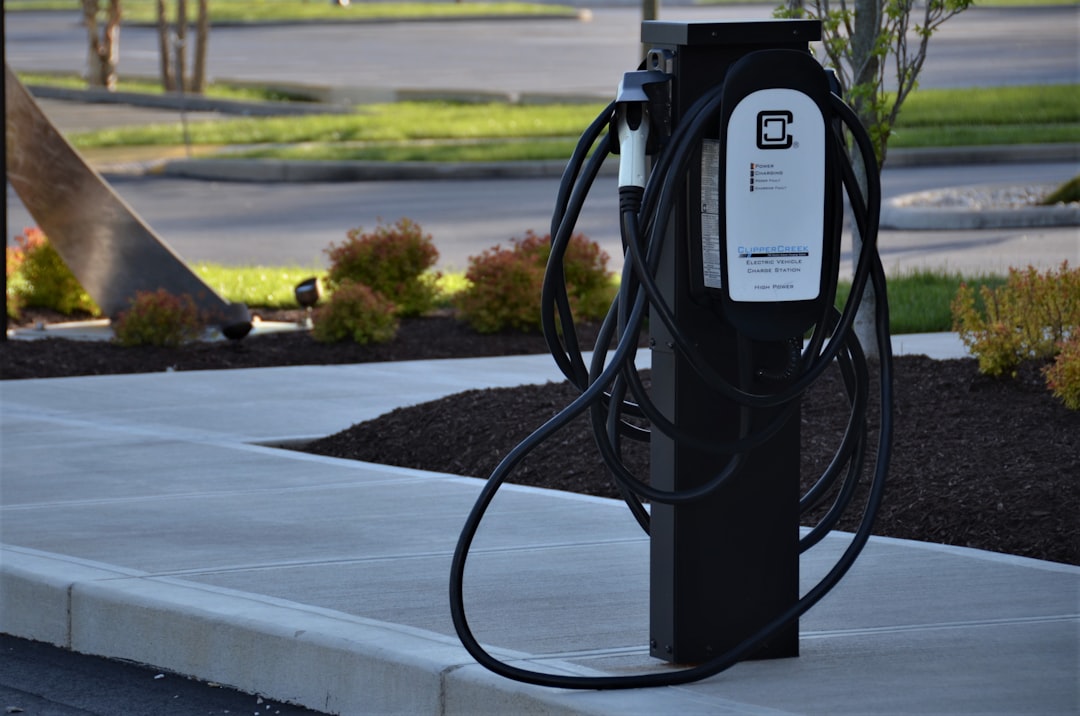Let's talk about the sustainability of electric vehicles
The production of electric vehicles is not sustainable. If we want eco-friendly cars, we must develop such rather than simply replacing with the same or worse.
Electric vehicles can be found everywhere. They are pushed on us as the future of automobiles due to the claim of being environmentally friendly. If you follow my work, you are aware that this is not true if we only consider their batteries, the production of which is not sustainable, uses child labour, and make these cars a fire hazard.
🔴 Many people are unaware of it, so please spread the word as widely as possible.
What about the other components used in the manufacture of electric vehicles?
The short answer is that production of the other components of electric vehicles is not sustainable. The fact that electric cars do not emit polluting gases may be the only advantage, but this can be disregarded because electric cars are mostly powered by traditional energy sources. Massive flow of electric vehicles will almost certainly create enormous demand for additional electric power generation far in excess of what the current electric power generating industry can provide with its current generating capacity. Normal car emissions can also be reduced by using oil and emission control filters.
How electric cars can be made sustainable?
Must be made of sustainable materials such as hemp or other materials.
Only use electricity generated by nuclear power.
Lithium-ion batteries are being replaced with environmentally friendly batteries that pose no fire risk.

I'll write about more on how to make cars more environmentally friendly soon. Now read and share the detailed review of electric cars below.
Production of electric cars excluding batteries
Here are some of the main supplies used in the manufacture of electric vehicles, excluding batteries:
Electric vehicles are frequently built with high-strength steel. In the event of a collision, this material provides structural rigidity and improves safety.
Aluminium is lightweight and corrosion-resistant, making it a popular material for body panels, chassis, and suspension system components. It helps to reduce the overall weight of the vehicle, which is critical for improving efficiency.
Copper is an important component in electric vehicles because it is widely used in electrical systems such as wiring, connectors, and electric motors.
Non-structural components, such as interior trim, body panels, and other parts, are made from a variety of plastics and composite materials. These materials can reduce weight and improve aerodynamics.
Magnesium alloys are used to reduce weight while maintaining strength in certain components. They are frequently found in parts such as transmission cases and structural components.
Carbon fibre reinforced composites are used for body panels, chassis components, and interior trim in some high-end and performance electric vehicles. Carbon fibre has a high strength-to-weight ratio.
Rubber is used to absorb shocks and vibrations in tyres, seals, gaskets, and various suspension system components.
Glass is used in electric vehicles for windows, windscreens, and mirrors. Special types of glass may be used in some electric vehicles to improve insulation and reduce noise.
Various materials, such as foams and insulating mats, are used to reduce noise and improve comfort inside the cabin.
Some electric motors, particularly those used in some types of electric vehicles, such as permanent magnet motors, may contain rare earth elements such as neodymium and dysprosium.
How electric car production affects the environment (excluding batteries)?
Steel
Steel production requires raw materials such as iron ore and coal. These materials' extraction and processing can have serious environmental consequences, including habitat disruption, water pollution, and air pollution.
Steel production consumes a lot of energy, especially in traditional blast furnace processes. Steel production can emit greenhouse gases and other pollutants, especially in older facilities. The emissions are primarily caused by the use of carbon-based fuels and the chemical reactions that occur during the manufacturing process.
Steel production produces a variety of waste products, including slag and emissions from steelmaking processes.
Transportation of raw materials and finished steel products can contribute to carbon emissions, particularly if materials are sourced from distant regions. China, Australia, Brazil, India, Russia, Canada, and South Africa are the world's largest producers of iron ore, the primary raw material for steel production.
—
Aluminium
Aluminium production requires a lot of energy, especially in the Hall-Héroult process, which extracts aluminium from bauxite ore. This process necessitates a significant amount of electricity, which contributes to greenhouse gas emissions.
The extraction of bauxite ore can have negative environmental consequences such as habitat disruption, deforestation, and water pollution.
Aluminium production can emit greenhouse gases, primarily to the energy-intensive smelting process. Furthermore, the process produces byproducts such as red mud, which can be difficult to manage.
Aluminium production generates a variety of waste, including spent pot lining, which must be properly managed to minimise environmental impacts.
—
Copper
Copper ore extraction, which typically takes place in open-pit or underground mines, can have significant environmental consequences. Habitat destruction, deforestation, water pollution, and soil degradation are examples.
Primary copper production involves energy-intensive processes, particularly during the smelting and refining stages. These processes contribute to the emission of greenhouse gases.
Copper mining operations can be water-intensive, and poor water resource management can cause environmental problems, especially in areas where water is scarce.
Copper production can produce a variety of emissions and byproducts, including sulphur dioxide (SO2) emissions from smelting operations, as well as slag and tailings, both of which can contain potentially harmful components.
Copper mining can have social and community consequences, such as community displacement, potential conflicts over land and resources, and challenges related to worker safety and rights.
—
Plastics
Many plastics come from fossil fuels.
Plastic pollution endangers ecosystems, wildlife, and human health.
Certain types of plastics, when manufactured and discarded, can release harmful chemicals into the environment. Concerns have been raised about the potential health effects of some plastic additives, such as phthalates and bisphenols.
—
Magnesium alloys
Magnesium alloys are made from raw materials such as magnesium, which is extracted from minerals such as magnesite or dolomite. The extraction process can have negative environmental consequences, such as habitat disruption and potential water pollution.
While magnesium production is less energy-intensive than that of some other metals, it still necessitates significant energy inputs. Furthermore, depending on the method of production, greenhouse gas emissions and air pollutants may be associated with magnesium production.
—
Carbon Fiber
Carbon fibre production requires energy-intensive processes such as precursor material production, carbonization, and surface treatment. This may result in excessive energy consumption and greenhouse gas emissions.
Carbon fibre production typically begins with the precursor material, which is frequently derived from petroleum-based substances such as polyacrylonitrile (PAN). The extraction and processing of these raw materials can have an impact on the environment.
Carbonization and surface treatment involve chemical processes that can emit greenhouse gases and other pollutants.
Carbon fibre manufacturing generates waste materials such as scrap and byproducts.
—
Rubber
Concerns have been raised in some parts of the world, particularly in Southeast Asia, about the replacement of natural forests and other ecosystems to rubber plantations. This can lead to biodiversity loss and habitat disruption.
Large-scale monoculture rubber plantations, in which only rubber trees are grown over large areas, can reduce biodiversity and harm soil health.
The use of agrochemicals in rubber production, such as fertilisers, pesticides, and herbicides, can have environmental and health consequences if not managed responsibly.
Water management issues can arise in rubber plantations, including potential impacts on local water resources and ecosystems. Water management and use must be done responsibly.
Bottom line
The production of electric vehicles is not sustainable. The charging of electric vehicles places a strain on the electric power grid. Electric car batteries are a fire hazard, and there is no system in place to deal with these fires. There are other issues, such as the fact that electric vehicles can be hacked and made uncontrollable.
If we want eco-friendly cars, we must develop such rather than simply replacing with the same or worse.
Extra read
“Electric cars can be more harmful to the climate than vehicles with combustion engines,” says Prof. Ferdinand Dudenhöffer. https://www.bild.de/politik/inland/politik-inland/erste-experten-sicher-e-autos-jetzt-dreckiger-als-verbrenner-82280342.bild.html
If you like my work, please consider supporting it! I'm having a hard time continuing with such a low level of support. I'm trying not to eat and another cold winter is on its way. How many of you could do it for such an extended period of time? My work saves lives, but who will save mine if I become ill and cannot afford proper care for myself?
How can you help?
Please share my work and subscribe.
Become a paid subscriber. Take advantage of the 48% discount
Donate via my blog https://genuineprospect.com/



